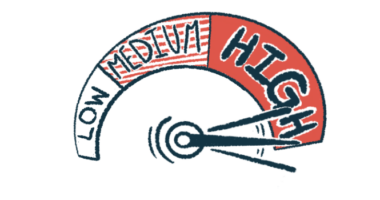AAV Patients Report Pain, Fatigue Despite Being in Clinical Remission

Despite being in clinical remission based on physician evaluation, many people with ANCA-associated vasculitis (AAV) report experiencing ongoing disease symptoms, a study has found.
Symptoms of pain and fatigue were the biggest indicators of active disease for patients in the study. These findings highlight the importance of considering patient-reported outcomes when assessing and treating AAV.
“A significant proportion of patients with AAV considered to be in remission by the physician still declares to have persistent aspects of uncontrolled disease,” the researchers wrote.
“PtGA [Patient Global Assessment] is significantly influenced by persistent pain and fatigue, which should receive more attention in the future assessment of patients with AAV,” they added.
The study, “Factors influencing patient-reported outcomes in ANCA-associated vasculitis: correlates of the Patient Global Assessment,” was published in the journal Seminars in Arthritis and Rheumatism.
Physician-based tools, such as the Birmingham Vasculitis Activity Score (BVAS), are commonly used to monitor AAV disease activity and determine whether remission has been achieved.
However, patients can differ markedly in their perceptions of their disease state compared with what’s reported by their physicians, highlighting a need to include patient-reported outcomes when making an assessment.
In addition, patient perspectives are still poorly integrated into clinical trials and medical practice.
To get a better sense of differences between patients and their physicians in perceptions of disease state, the researchers asked AAV patients seen at the vasculitis outpatient clinic at the University of Pavia in Italy to complete a questionnaire about symptoms related to active disease that they experienced in the past four weeks.
All participants had been in clinical remission for at least six months, which was determined by a score of zero on both the BVAS and the Physician Global Assessment — a scoring system that indicates a doctor’s assessment of a patient’s disease activity, with zero indicating no disease activity.
Data were analyzed from 65 patients (57% female) with a mean age of 61 years and a median disease duration of six years. They had one of three types of AAV: 32 had eosinophilic granulomatosis with polyangiitis (EGPA), 24 had granulomatosis with polyangiitis (GPA), and nine had microscopic polyangiitis (MPA).
Despite being considered in remission, all 65 patients reported at least one impairment on their questionnaires.
While all patients had a score of zero on the Physician Global Assessment, indicating no active disease, 24 patients reported scores above zero on the Patient Global Assessment, corresponding to a 37% discrepancy between assessments by physicians and those by patients.
Patients perceived their general health to be impaired in 86.15% of the cases. Most also reported fatigue (84.62%), followed by pain (55.38%), and sleep disturbance (20%).
About three-quarters of patients (76.92%) believed they had accrued some degree of chronic damage due to their AAV, of which chronic pain was reported as the main driver (18.46%), followed by respiratory difficulties (16.92%), fatigue (13.84%), kidney damage (9.23%), neurological damage (7.69%), ear, nose and throat damage (7.69%), and sight or hearing loss (6.15% each).
The degree of vasculitis damage accrual, assessed by a physician with the vasculitis damage index, was not significantly associated with patients’ perceptions of disease activity, suggesting that chronic damage is not likely to explain the discrepancies between physician- and patient-reported outcomes, the researchers said.
Female sex was determined to be significantly correlated with an elevated PtGA score, with about half (51%) of females reporting higher scores compared with 18% of males.
PtGA scores were also significantly associated with all other patient-reported outcomes, including pain, general health, fatigue, and perception of chronic damage accrual.
Pain and fatigue were associated with the highest risk of having an elevated PtGA.
“In conclusion our study demonstrates a significant discordance between physician’s and patient’s perspectives on the disease activity in AAV,” the researchers wrote.
“[Patient-reported outcomes], and especially the PtGA, fatigue, and pain offer a unique [perspective] on the state of disease and deserve more consideration in the management of patients with AAV,” the team wrote.








